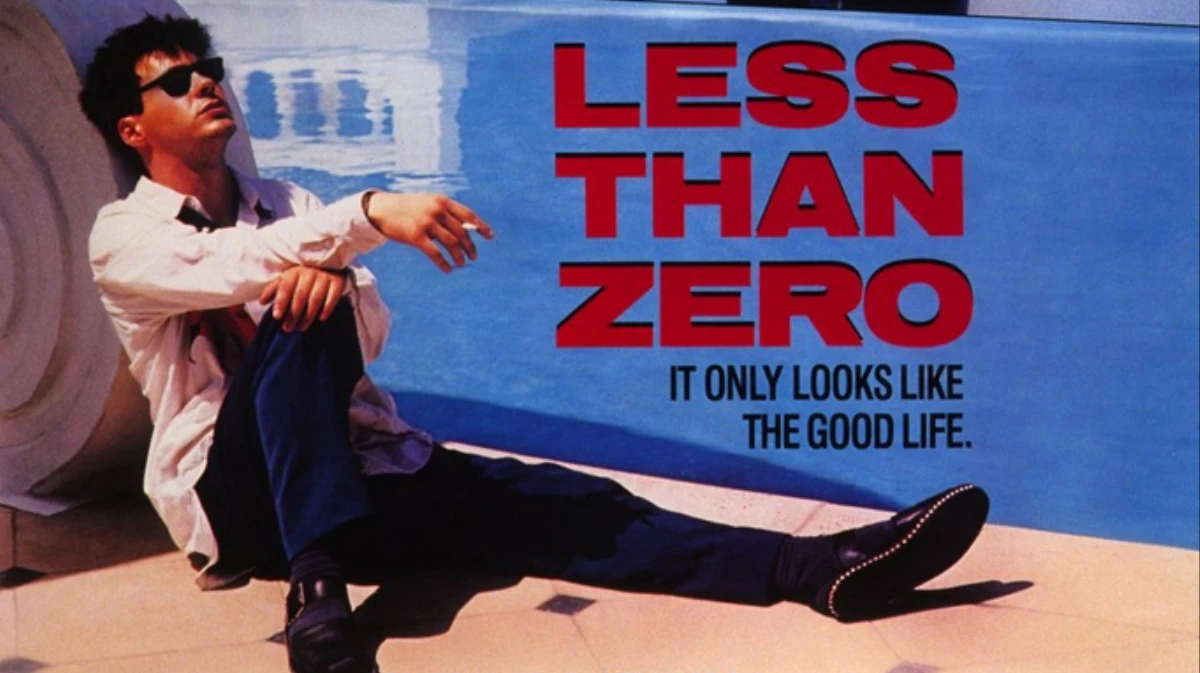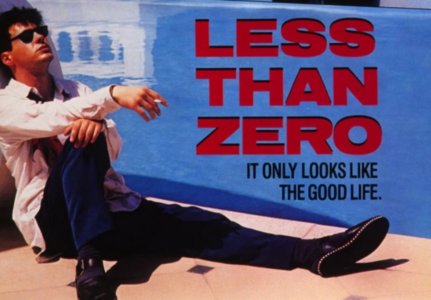Less Than Zero, a seminal novel by American author Bret Easton Ellis, takes readers on a haunting exploration of the hedonistic and morally bankrupt world of wealthy Los Angeles youth in the 1980s. With its unflinching portrayal of drug addiction, nihilism, and the emptiness of excess, this novel has left an indelible mark on the literary landscape. In this extensive article, we will delve into the plot, key characters, key themes, the inspiration behind the book, reviews, cultural impact, and explore other works by the same author.
Plot
Less Than Zero is a novel that offers a disturbing glimpse into the life of Clay, a young man who returns home to Los Angeles for Christmas vacation after his first semester at an elite New England college. As he navigates the glittering yet soulless landscape of his hometown, Clay is drawn into a world of excess and moral decay that he finds both repulsive and irresistible.
The plot unfolds through a series of loosely connected episodes, presenting a fragmented narrative mirroring Clay’s disoriented state of mind. We witness his encounters with a cast of characters, each more disturbing than the last. Among them are his best friend Julian, a former high school buddy turned drug addict and prostitute, and his ex-girlfriend Blair, who is now dating Clay’s other friend, Trent. These characters epitomize the disillusionment, moral decay, and lack of direction that permeate the lives of wealthy Los Angeles youth.
As the story progresses, Clay becomes increasingly detached from his surroundings. He drifts through a series of parties, sexual encounters, and drug-fueled escapades, all of which leave him feeling empty and disconnected. The novel’s bleak and unapologetic portrayal of these experiences serves as a stark commentary on the hollowness of a materialistic and morally bankrupt society.
Key Characters
Clay
- Description: The protagonist and narrator of the story. A young man who is back in Los Angeles for the holidays. He is a passive observer of the excesses and moral decay around him, struggling to find meaning in a world devoid of values.
- Role: Clay serves as the lens through which the reader explores the decadent world of wealthy Los Angeles youth. His internal conflict and detachment make him a relatable yet enigmatic character.
Julian
- Description: Clay’s best friend from high school who has fallen into a downward spiral of drug addiction and prostitution. He serves as a symbol of the destructive consequences of excess and the vulnerability of youth.
- Role: Julian’s character highlights the tragic consequences of the hedonistic lifestyle pursued by the novel’s characters. His story is a cautionary tale of the dark side of privilege.
Blair
- Description: Clay’s ex-girlfriend, who is now dating Trent. She represents the emotional complexity and confusion of young adulthood.
- Role: Blair’s character adds depth to the novel by showcasing the emotional entanglements and shifting relationships among the characters. Her presence highlights the theme of alienation.
Trent
- Description: Another of Clay’s friends, he is now dating Blair. Trent embodies the superficiality and materialism of the Los Angeles elite.
- Role: Trent serves as a representation of the pursuit of material wealth and social status at the expense of personal values. His character underscores the novel’s critique of a morally bankrupt society.
Key Themes
Alienation and Disconnection
One of the central themes of Less Than Zero is the profound sense of alienation and disconnection experienced by the characters. Clay, in particular, struggles to connect with the people and events around him. This pervasive feeling of emptiness reflects the alienation felt by many young adults as they grapple with the complexities of modern life.
The Allure of Excess
The novel explores the allure of excess and indulgence, particularly in the context of material wealth and drug use. The characters in Less Than Zero are drawn to a lifestyle characterized by opulence and hedonism. This theme underscores the emptiness that often accompanies the pursuit of material pleasures.
Moral Decay
Moral decay is a recurring motif in the novel. The characters in Less Than Zero are caught in a web of moral ambiguity, engaging in morally reprehensible behavior without consequence. This theme reflects the erosion of traditional values and the ethical vacuum that can result from a culture obsessed with consumption.
Loss of Innocence
The novel also explores the loss of innocence among its characters. Clay and his friends, who once enjoyed the carefree innocence of youth, are now confronted with the harsh realities of adulthood. This loss of innocence is symbolized by their descent into a world of drugs, prostitution, and emotional detachment.
What Inspired the Book
Bret Easton Ellis wrote Less Than Zero when he was just 19 years old, drawing inspiration from his own experiences growing up in Los Angeles during the 1980s. Ellis was a keen observer of the excesses and moral decay of the wealthy youth in his hometown, and this firsthand knowledge deeply influenced the novel. He once remarked, “I wasn’t really thinking in terms of a plot. I was just chronicling a certain time and place.”
Ellis’s writing style in Less Than Zero is characterized by its detached and minimalist approach, which mirrors the emotional detachment of the characters. This style was partly influenced by the works of authors like Joan Didion and Raymond Carver, known for their concise yet evocative prose.
Reviews and Cultural Impact
Upon its release in 1985, Less Than Zero garnered both critical acclaim and controversy. The novel’s unflinching portrayal of drug use, promiscuity, and moral depravity shocked many readers and critics. However, it also resonated with a generation of young adults who identified with the sense of disillusionment and alienation depicted in the book.
The novel’s cultural impact was significant. It became a bestseller and established Bret Easton Ellis as a literary provocateur. The book’s themes and characters tapped into the anxieties and uncertainties of the 1980s, making it a touchstone for a generation grappling with questions of identity and meaning.
Less Than Zero was adapted into a film in 1987, directed by Marek Kanievska and starring Andrew McCarthy as Clay. While the film received mixed reviews, it further cemented the novel’s place in popular culture.
Examples of Similar Books
If you enjoyed Less Than Zero and are looking for books with similar themes and tones, here are a few recommendations:
1. “Bright Lights, Big City” by Jay McInerney
- This novel explores the excesses of New York City in the 1980s and follows the life of a young writer who becomes entangled in the city’s nightlife and drug scene. It shares themes of alienation and self-discovery with Less Than Zero.
2. “Trainspotting” by Irvine Welsh
- Set in Edinburgh, this novel delves into the lives of heroin addicts. It’s a gritty exploration of addiction, disillusionment, and the search for meaning, similar to the themes in Ellis’s work.
3. “The Secret History” by Donna Tartt
- While tonally different from Less Than Zero, this novel explores the dark underbelly of an elite college campus and the moral consequences of a group of friends’ actions. It delves into themes of decadence, moral decay, and the consequences of privilege.
4. “Infinite Jest” by David Foster Wallace
- A complex and sprawling novel, it tackles themes of addiction, entertainment, and the search for meaning in a fragmented society. Like Less Than Zero, it offers a sharp critique of contemporary culture.
Other Books by the Same Author
Bret Easton Ellis is known for his provocative and often controversial writing style. Here are some other notable works by the author:
1. “American Psycho” (1991)
- Perhaps Ellis’s most infamous work, this novel follows the life of Patrick Bateman, a wealthy investment banker who moonlights as a serial killer. It’s a satirical exploration of consumer culture and moral decay in the 1980s.
2. “The Rules of Attraction” (1987)
- This novel explores the lives and relationships of a group of college students at an elite New England university. It delves into themes of love, sex, and emotional detachment.
3. “Glamorama” (1998)
- A surreal and satirical novel that combines elements of celebrity culture, fashion, and terrorism. It’s a dark and disorienting exploration of fame and obsession.
4. “Lunar Park” (2005)
- Part memoir and part fictional narrative, this novel blurs the lines between reality and fiction as it follows a character named Bret Easton Ellis. It’s a metafictional exploration of identity and celebrity.
In conclusion, Less Than Zero remains a powerful and unsettling novel that continues to captivate readers with its unflinching portrayal of excess, moral decay, and the search for meaning in a materialistic world. Bret Easton Ellis’s debut work has left an indelible mark on literature, challenging readers to confront the darker aspects of contemporary culture and the human condition.


